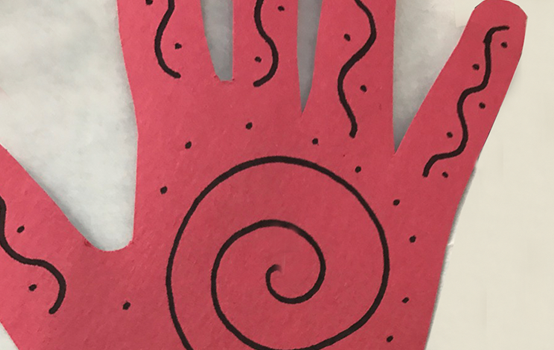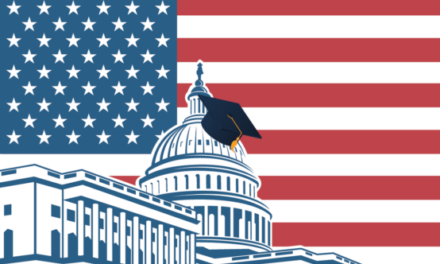To engage high school students in learning about racial identity and difference, ask college students to lead the discussion.
A black student tweets at a white teammate that it is not OK for him to use the “N” word, and the white teammate tweets back, “I can say whatever I want whenever I want.” The next day at school, the black student throws a punch and is suspended. The white student walks away.
This particular incident occurred recently in a Midwestern high school. However, versions of it are playing out in countless schools across the country. Teachers and administrators everywhere are searching for ways to address racial tensions before they erupt in classrooms and hallways, but many lack the skills needed to teach young people how to live, work, and thrive in diverse communities. Further, at a time when 80% of public school teachers are white but almost half of students are not (Maxwell, 2014), many educators are reluctant to talk openly about racial divisions, or they are uncertain how to model the kind of civil discourse that can help students reach across the boundaries that separate them.
In our work, we’ve learned that near-peer facilitators can help high school students enter into productive dialogues about racial and cultural differences. In this article, we describe a program that we created, helped implement, and assessed in a Michigan high school (which we refer to below as East High).
The high school students deepened their ability to think critically about racial issues and listen actively to others’ opinions.
Addressing race through intergroup dialogue
Our team — a university faculty member, university administrator, and high school English teacher — collaboratively designed an intervention meant to help high school freshmen engage in honest conversations across racial differences. The curriculum and methodology are based on Intergroup Dialogue (IGD), an evidence-based set of practices that have been used and continuously improved for more than three decades to address social justice issues in educational and community settings (Adams, 2007; Maxwell et al., 2011; Zúñiga et al., 2007).
In the IGD model, members of two or more social identity groups participate over a sustained period of time in a series of carefully facilitated conversations about race and culture (Zúñiga, Lopez, & Ford, 2012) and in activities designed to help them deepen their understanding of their own identity, understand one another’s experiences, and ultimately take action to bridge their differences (Gurin, Nagda, & Sorensen, 2011; Zúñiga et al., 2007).
IGD’s track record is impressive. For example, a study of programs at 30 universities found that participants increased their understanding of race, gender, and income inequality, and they increased intergroup empathy and motivation to connect with members of other groups (Gurin, Nagda, & Zúñiga, 2013). Further, longitudinal research into IGD shows these gains persist for many years after students have participated in the dialogues (Gurin, Nagda, & Zúñiga, 2013).
Typically, IGD has been used to improve communication among students, most often at the college level. However, we found that the model can also be used effectively to help high school teachers — particularly white teachers working with students of color — learn how to talk and teach about race.
White teachers, diverse students
At East High, our collaborating high school, the faculty is almost entirely white, but among the school’s roughly 1,100 students, 60% identify themselves as white, 18% black, 7% Asian, 8% Hispanic, and 7% as more than one race (ELHS, 2016). In such schools, where white teachers are seriously overrepresented, even the best intentioned teachers tend to avoid or silence classroom conversations about race (Mitchell, Hinueber, & Edwards, 2017) for a variety of reasons, including:
- Fear of being called racist (Pollock, 2004);
- Belief that not talking about race is an effective way to ease racial tensions (Pollock, 2004);
- Concern that racialized conversations lie outside the scope of their content area (Griffin, 2015);
- Belief that they have not been properly trained to lead such conversations (Griffin, 2015); and
- Fear that parents will respond with anger or criticism (Griffin, 2015).
When teachers avoid conversations about race, however, negative consequences tend to follow. For example, student culture often becomes hyper-racialized (Griffin, 2015) — far from putting race out of their minds, students talk about it constantly, and they do so in problematic ways, such as by making racial jokes and using racial slurs (Griffin, 2015). Moreover, when teachers and staff do nothing to intervene, they miss important opportunities to model how one might challenge prejudice and discrimination when it occurs, and they signal a tacit acceptance of racial inequalities in and outside of school (Delpit, 2006; Griffin, 2015; Lynch, Swartz, & Isaacs, 2017; Mitchell, Hinueber, & Edwards, 2017).
Many teachers are aware of these consequences and regret their own avoidance of conversations about race, but they lack the skills needed to engage the issue effectively. Indeed, most of the country’s schools of education have neglected to prepare teachers to talk openly and productively about racial differences, and many are only just beginning to incorporate this subject into their teacher training curricula (Crocco, 2017). Nor, when we began our collaboration at East High, did we set out to teach intergroup dialogue facilitation to the school’s faculty. Over time, though, we came to find that as a result of our work, teachers developed skills and tools that allowed them to respond when students made oppressive comments in their classrooms.
Program design
Over two years, a pair of instructors cotaught two civic engagement courses at our university. These junior-level, elective four-credit classes, which enrolled about 20 students each, provided five weeks (28 hours) of intensive instruction on topics related to race and racism, as well as training in facilitation skills. Early in the semester, students were placed into two- or three-person teams and assigned to work with two or more English classes at East High, assisting the teachers in a variety of capacities, getting to know the high school students, and observing instruction. During those two years, the teams were assigned to 26 English classrooms in all, and they worked with seven different teachers and 550 high school students.
After their initial few weeks at East High, the college student teams were provided with detailed 55-minute lesson plans and assigned to facilitate a series of eight weekly dialogues in each class. Each of the lessons was scaffolded, moving from a review of the principles of dialogue to a detailed discussion about the given theme (such as the history of racism in the U.S., the meaning of identity, individual versus institutional racism, and how to be an ally). Before each of these weekly sessions, their university professors introduced them to the upcoming discussion topic and had them participate in the activities they would be facilitating at the school. Also, the college students took turns leading demonstration lessons with their peers to work through any challenges that might arise in the high school classrooms. Lastly, their professors coached them on effective facilitation, addressing topics such as classroom management and ways of handling heated conversations.
The sequence of eight weekly dialogues — which started roughly halfway through the high school term — was designed to engage East High’s students in defining their own identities, building relationships across groups, and learning ways to intervene in intergroup conflict. The facilitators would introduce each topic with a YouTube video, short film, Jeopardy-style game, or other group activity and would then continue with lessons and discussion prompts that touched on both emotional and intellectual content. The sessions culminated with an open house event, where the high school students shared their learning with others in the school community.
Preliminary results
As researchers, we were interested to see how the near-peer facilitators affected the high school students’ understanding of their racial experiences. To this end, we developed pre- and post-assessments and a midterm survey — each of which included both Likert-scale quantitative questions and qualitative, open-ended questions — and we administered them to all of the participating high school students.
The quantitative responses show statistically significant gains on 14 of the 25 items tested, including increased understanding of concepts around both the purposes of dialogue and understanding of racial identities. The results also show that the high school students deepened their ability to think critically about racial issues and listen actively to others’ opinions. Further, the data show that the students significantly increased their desire to intervene when they witnessed bullying or oppression due to social group membership.
High school student perception of near-peer facilitators
The qualitative responses also revealed important insights into high school student perceptions of college student facilitators. In response to the question, “How do you feel about ‘near-peer facilitators’ (college students) in your intercultural dialogue?,” 147 (88%) of the 166 students’ answers were positive, and 19 (11%) were negative. The most frequent theme in the negative responses centered on the facilitators’ lack of confidence in their teaching skills. However, the overwhelming feedback from the high school students favored having the college students lead their intercultural dialogue. The high school respondents noted how the closeness in age to the facilitators increased their willingness to participate; that the facilitators were “relatable” and open to diverse opinions; and that when the facilitators shared their life experiences, this helped deepen student understanding of content.
Typical comments included:
“I feel glad to have the facilitators in our Intercultural Dialogue. This is because they are very encouraging and supportive of EVERYONE.”
“Our facilitators have been great. I like having college students for the dialogue because I feel like they understand us better because they were in our shoes not too long ago.”
“They told us about their life as examples so that we can understand better.”
“The two girls in our class are awesome . . . They do a very good job with the material and making sure that everyone is included. I like that they are closer to our age because I think it makes it easier for them to relate to us students vs. an older teacher or facilitator.”
“I like that we don’t have to listen to boring old people talking.”
Overall, the responses indicate that students believe they could access the difficult subject matter more comfortably having facilitators who were nearer to their age than a typical teacher. Another pattern worth highlighting is that some high school students noted that their college facilitators were open to all perspectives. For example, during an informal discussion of the program, a high school student participant said she liked the college facilitators specifically because they allowed her to share her conservative perspective, something she believed her teacher had limited. Because the goal of IGD is to surface all perspectives and provide space to work collaboratively to understand across differences, the college student facilitators modeled how to allow space in the classroom for minority (in this case, conservative) opinions to be considered, and the presence of all opinions in their dialogue allowed students to honestly grapple with entrenched racial ideas.
When teachers avoid conversations about race, negative consequences tend to follow.
College student outcomes
To evaluate the effect of this experience on the participating college students, we designed and used pre- and post-assessments with 36 items related to their college curriculum and facilitation experience. We also used a midsemester survey and year-end course evaluation form. We found statistically significant differences in 26 of the 36 pre-/post-test mean responses. The college students indicated that they felt the most growth in learning to facilitate dialogue, understanding their own and multiple identities of others, and their comfort leading a group of public school students in a project.
Typical comments included:
“This class is probably one of the most important classes I have ever taken. The readings, activities, and weekly facilitation discussions at the high school have improved my communication skills, my understanding of race in the U.S., and my leadership skills.”
“I can honestly say that this is the first course where I feel like I’ve learned something of value. This is the first time where I felt challenged, like I was learning something new, and where I feel like I was given tools to make a difference in the world.”
“The things that I learned in this classroom have helped me grow as a person, and I can honestly say I am a more educated, woke, and compassionate individual because of it. I finally feel like I have the tools to go out into the world and make a positive difference, and I think that’s an opportunity all students should have.”
The college students also indicated their belief that they had a significant effect on the lives of the high school students with whom they worked. As one student put it:
I got the chance to lead and facilitate important dialogues on topics such as identity, institutionalized racism, microaggression, allyhood, and so much more. We changed the lives of young students for the better, gave them tools on how to stand up against oppressive acts and comments, and showed them how to be a good ally to marginalized groups. These kinds of skills are becoming more crucial to have, and we need to teach everyone about how to do these kinds of things.
These findings are consistent with a growing body of literature documenting the specific skills college students develop as a result of participation in intergroup dialogue (Gurin, Nagda, & Zúñiga, 2013; Hopkins & Dominguez, 2015).
Implications for future work
Our intergroup dialogue program, as presented here, appears to be an effective intervention model for promoting civil discourse on race in this hyperpartisan age. Our preliminary analysis of data supports that conclusion.
Intergroup dialogue embedded in high school classrooms and facilitated by trained near-peer college students improved both high school and college students’ understanding about how to engage in dialogues about racial issues, how to listen actively to others’ experiences, and how to intervene in racial conflicts in productive ways. Further, the high school students said peer facilitators were particularly effective “because they’re closer to our age and know more about how we feel than an adult,” as one student said.
Similarly, college student facilitators showed meaningful gains in their understanding across different racial identities in addition to their increased sense of efficacy as facilitators of intergroup dialogue. They also reported increased compassion and confidence as change agents. As one college facilitator said, “This is the first class . . . where I feel like I was given tools to make a difference in the world.”
Finally, an unanticipated but promising outcome from the project was that the collaborating high school teachers benefitted as well from observing the college students’ facilitation techniques. Witnessing these dialogues in their classrooms, these teachers reported, helped them develop their own skills and willingness to address racial issues. Moving forward, we plan to provide training in IGD to teacher-collaborators, and we are excited to conduct further research into the use of the IGD model in teacher development. Also, the near-peer program migrated to our university’s school of education, with the goal of ensuring that the skill of facilitating intergroup dialogues becomes a standard part of every future teacher’s tool kit.
References
Adams, M. (2007). Pedagogical frameworks for social justice education. In M. Adams, L.A. Bell, & P. Griffin (Eds.), Teaching for diversity and social justice (2nd ed.) New York, NY: Routledge.
Crocco, M. (2017, March 21). Personal interview.
Delpit, L. (2006). Other people’s children. New York, NY: The New Press.
East Lansing High School (ELHS). (2016). School improvement plan. East Lansing, MI: Advance Education Inc.
Griffin, S.R. (2015). Those kids, our schools: Race and reform in an American high school. Cambridge MA: Harvard Education Press.
Gurin, P., Nagda, B.A., & Zúñiga, X. (2013). Dialogue across difference: Practice, theory, and research on intergroup dialogue. New York, NY: Russell Sage Foundation.
Gurin, P., Nagda, B.A., & Sorensen, N. (2011). Intergroup dialogue: Education for a broad conception of civic engagement. Liberal Education, 97 (2), 46-51.
Hopkins, L.E. & Dominguez, A.D. (2015). From awareness to action: College students’ skill development in intergroup dialogue. Equity and Excellence in Education, 48 (3), 392-402.
Lynch, I., Swartz, S., & Isaacs, D. (2017). Antiracism oral education: A review of approaches, impact, and theoretical underpinnings from 2000 to 2015. Journal of Moral Education, 46 (2), 129-144.
Maxwell, K.E., Fisher, R.A., Thompson, M.C., & Beling, C. (2011). Integrating cognitive and affective learning. In K.E. Maxwell, B.A. Nagda, & M.C. Thompson (Eds.), Facilitating intergroup dialogues: Bridging differences, catalyzing change. Sterling, VA: Stylus Publishing.
Maxwell, L. (2014, August 19). U.S. school enrollment hits majority-minority milestone. Education Week.
Mitchell, D., Hinueber, J., & Edwards, B. (2017). Looking race in the face. Phi Delta Kappan, 98 (5), 24-29.
Pollock, M. (2004). Colormute: Race talk dilemmas in an American school. Princeton, NJ: Princeton University Press.
Zúñiga, X., Lopez, G., & Ford, K. (2012). Intergroup dialogue: Critical conversations about difference, social identities, and social justice: Guest editors’ introduction. Equity and Excellence in Education, 45 (1), 1-13.
Zúñiga, X., Nagda, B.A., Chesler, M., & Cytron-Walker, A. (2007). Intergroup dialogue in higher education: Meaningful learning about social justice. ASHE-ERIC Higher Education Report, 32 (4). San Francisco, CA: Jossey-Bass.
Originally published in February 2018 Phi Delta Kappan 99 (5), 51-55. © 2018 Phi Delta Kappa International. All rights reserved.
ABOUT THE AUTHORS

Donna Rich Kaplowitz
DONNA RICH KAPLOWITZ is an assistant professor of teacher education and a faculty associate, Office of Inclusion and Intercultural Initiatives, Michigan State University, East Lansing.

Jasmine A. Lee
JASMINE A. LEE is a neighborhood director with the Neighborhood Student Success Collaborative, Michigan State University, East Lansing, Mich.

Sheri L. Seyka
SHERI L. SEYKA is chair of the English department at East Lansing High School, East Lansing, Mich.










